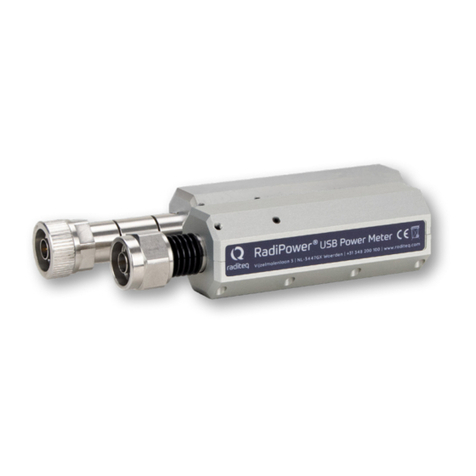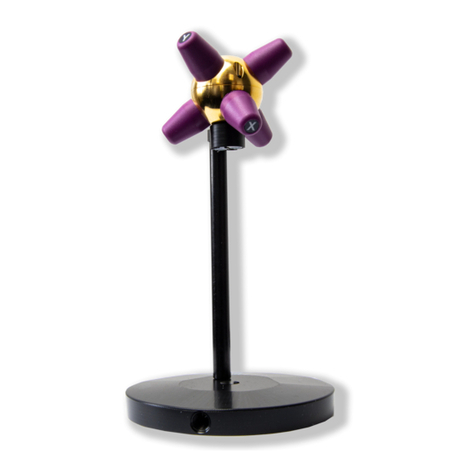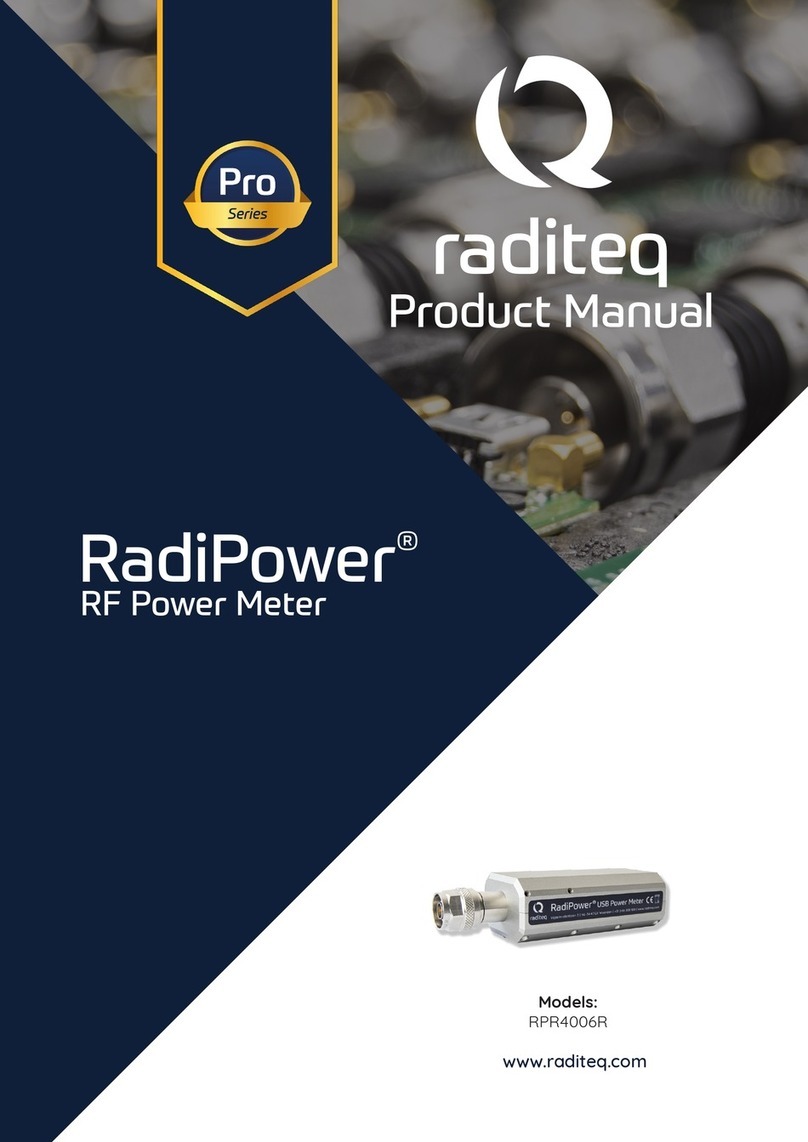
Page 7 of 29
This product manual is subject to change without notice
Copyright © 2008 - 2022 Raditeq B.V.
RadiSense® Product Manual
RSS2010E
The RadiSense® Series
Product Characterstics
Laser Powered - The RadiSense 10 is powered by laser light, eliminating the need for batteries. This allows
24-7 continuous testing at maximum performance without the need to change or recharge batteries. In most
instances changing batteries also requires re-calibration.
Superb measurement accuracy – To perform accurate eld measurements, the E-eld sensor dimensions must
be as small as possible compared to the wavelength of the measured signal. There are two reasons for this:
• Firstly,becauselargesensorsizescausethebodysensortoresonateatlowerfrequencies,causingmeasurement
inaccuracies.
• Secondly, to maintain eld uniformity in an anechoic chamber. The smaller the sensor, the better the obtainable
resolution for eld homogeneity measurements.
InTEM andG-TEM cells, sensordimensions above100mm are largecomparedto the dimensionsof thehomogenate
eld area, making them useless in these situations.
The sensor dimensions of the RadiSense® 10 are small relative to other probes, increasing measurement accuracy.
In addition, the RadiSense® 10 is equipped with two (2) antenna elements per axis (six (6) in total) to optimize
isotropic performance and achieve the best overall accuracy.
As part of the ISO9001 quality procedure each RadiSense® 10 eld sensor is factory adjusted and veried. By
default linearity adjustment data is stored inside the RadiSense® 10 eld sensor.
User correction - calibration factors
Additionally, the RadiSense® 10 series has the capabilities to store “user correction factors” inside the eld sensor.
By applying calibration factors in the sensor itself, there is no risk one forgets to apply the frequency correction
data when performing manual or automated tests.
The frequency response correction factors which are determined during an ISO/IEC 17025 accredited calibration
of the probe can be stored inside the eld sensor using the RadiMation® device driver.
Please refer to paragraph 5 of this manual for further instructions.
When the user correction data is stored inside the probe the RadiSense® 10 eld sensor will return corrected
E-eld readings without the need to apply additional corrections. In this case corrections will be applied inside
the probe for each individual axis.






























